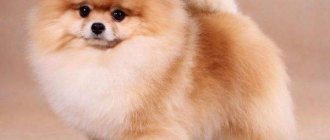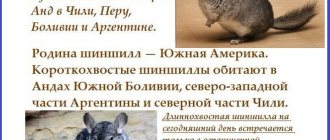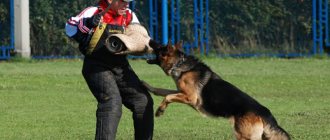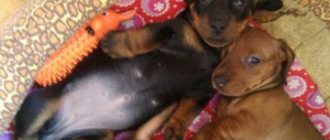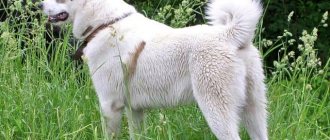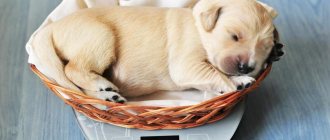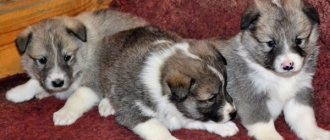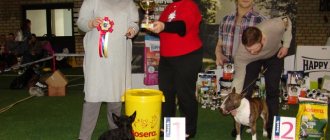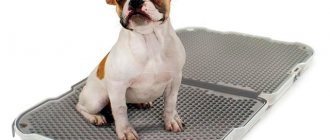a brief description of
| Aggressiveness |
| Upbringing |
| Training |
| Intelligence |
| Shedding |
| Behavior with children |
| Watchman |
| Security guard |
| Difficult to care for |
| Endurance in the cold |
| Endurance in the heat |
| Russia | |
| Lifespan | 10−12 years |
| Height male | 53–60 cm |
| Rising bitch | 48–58 cm |
| Weight male | 18-30 kg |
| Weight bitch | 18–30 kg |
Laika is a common and relatively new hunting dog breed in Russia. It is distinguished by unique, well-developed hearing, vision and sense of smell. Representatives of the breed are very beautiful in appearance, intelligent, well-mannered and friendly.
The breed belongs to group 5 “Spitz and primitive breeds” in the ICF classification. Some varieties, for example, the Yakut Laika, are still not recognized by the FCI.
Origin, history, creation
In ancient times, huskies were the name given to ordinary yard dogs living in almost every yard. They were called “yard dogs”, “northern pointy-eared dogs”, “pointy-eared dogs”. The Laika dog breed received its official name relatively recently.
The purpose of the breed has long been hunting. But if in the European part of Russia hunting was, for the most part, the prerogative of aristocrats who used hounds for this purpose, then for the peoples of the North and Siberia, fur fishing remained one of the main types of export trade. That is why increased demands were placed on hunting dogs, which the Laika met perfectly.
In the harsh conditions of the northern climate, dogs developed endurance, strength and other character traits, thanks to which they could bring real benefits to humans.
Interesting! Individuals that were considered useless and weak were not used by hunters for hunting and were destroyed, since it was not economically profitable to keep them. As they explored the North, newcomers brought dogs with them, and when mixed with them, the “witties” lost the purity of their blood, and with it their unique hunting qualities. Residents of the North also tried to eliminate the “half-breeds.” Now it seems cruel, but it was this method of breeding dogs that contributed to the emergence of a breed that is today considered one of the best in the world in terms of hunting characteristics.
Experts distinguish two periods of origin of the Laika breed. The first is the result of a hundred years of selection by hunters of the strongest dogs that hunt large animals, the second is the standardization of the breed, which began in the 20th century.
The first research and work on factory breeding with Ostroushkek began in the century before last. Active work began to promote this breed: publication of scientific research articles, publication of a separate book “The Laika and Hunting with It.” The first nurseries were formed, which contained the best representatives of this breed.
The Laika was approved as an official breed in 1925, and a few years later at the First All-Union Exhibition of Hunting Dogs, Laikas were very widely represented, which proved their enormous popularity among hunters.
Initially, huskies were classified into certain species according to the names of the peoples who bred them. Several ecotypes are known, each of which has certain features of appearance. At the end of the 30s of the last century, when cynologists identified Finno-Karelian, Karelian, Mansi, Khantei and Zyryan Laikas.
During the Great Patriotic War, the Laika dog was on the verge of extinction, so breeding work was interrupted, and the number of hunting dogs was significantly reduced. But they continued to be assistants to people: they were used as demolitions, mine-search dogs, messengers, ambulance dogs, and used to transport cargo and ammunition. Due to the fact that the country needed furs, the organization of nurseries was resumed.
Factory breeding required the creation of a new breed classification and a revision of existing breed standards. At the end of the 40s, cynologists decided to approve four temporary standards: Russian-European, Karelian-Finnish, West Siberian, East Siberian.
In the middle of the last century, breeding work was actively carried out, nurseries were created to improve the breed, but with the collapse of the USSR, the Laika dog began to degenerate. This was due to the closure of the kennel, when the best representatives of this breed ended up on the street, where they mixed with yard dogs.
Today the breed has become popular again. The following types of huskies are considered the most common:
- West Siberian;
- East Siberian;
- Russian-European;
- Norwegian;
- Swedish;
- Karelian-Finnish;
- Finnish.
In Russia and the CIS, the first three species are most often found.
Interesting! Some experts classify Siberian Huskies as the breed we are considering. The Laika Husky is a dog that was bred in Siberia by the Chukchi. It was used as a means of transportation - it, along with its relatives, was harnessed to a harness.
Trips with a husky to the dacha
The summer season is happiness for children and dogs: holidays, sun, river, no city dust. If you are a fan of growing vegetables, sunbathing on a sun lounger, or just spending time in nature, then your husky will be happy to accompany you everywhere. Most huskies are excellent swimmers and don't mind taking a dip in the water on a hot day. In addition, a beautiful, playful dog will likely be popular with local children, and they will take over some of your responsibilities for training the animal.
However, there are nuances that need to be taken into account when taking your dog to the country.
- Until the end of the vaccination quarantine, the puppy cannot be taken outside, even if you really want to (the dacha is considered a street), this is dangerous for his life.
- Laikas are temperamental and enthusiastic dogs, so before you let the animal run without a leash, make sure that it obeys you perfectly. Despite its good disposition, a husky can bark and greatly frighten a child (or even an adult).
- Don't let your husky run around unattended if you value your flower beds. A hunting dog can dig up an entire garden in search of voles in a matter of minutes.
- Take into account the tendency of huskies to escape (this is also important if the husky is constantly kept in a private house ). The excitement of the hunt and irrepressible energy sometimes play cruel jokes. Most often, huskies return without incident, but losing an animal is very scary, especially since someone else might offend it along the way.
- husky is kept in an apartment for 9 months a year , there is no need to put it in an enclosure at the dacha. Retraining an animal, changing its lifestyle for three months and then returning to old habits is painful and pointless for it.
Characteristics, description, character
For the Laika dog, a description of the breed was compiled back in 1939. But the standard was temporary; a permanent standard was approved in 1952.
- Distinctive features of huskies are their muscular body and strong skeleton. The height limit is 63 centimeters, for males - 52-58 cm, for females - 48-54 cm (on average).
- The coat is of medium length, thick, coarse, straight, with a soft and dense undercoat. The husky has a kind of collar on its neck, which is formed due to the fact that the hair on the shoulders and neck is thicker than on other parts of the body.
- The color is varied, most often mixed, white-gray or red.
The Laika breed has a freedom-loving and independent character, but at the same time very loyal.
- The breed is inquisitive, so if there is no leash, the husky can run far from its owner.
- Impeccable hunters and watchdogs, they show aggression only if they feel that their owner is in danger.
- They love attention and get along well with children.
- They are touchy, talkative, find it difficult to tolerate separation from loved ones, and cannot stand loneliness.
- They are indifferent to strangers.
- Likes are not characterized by servility or arrogance.
- What offends them most is injustice, which they will not tolerate even from their owners.
- They are fearless and quick-witted, capable of assessing a situation and making a decision, but the owner remains the leader in any situation.
- They are accommodating and flexible, but at the same time persistent.
- They love to play with people, run, jump, and always follow the owner’s commands. Even if the command is incorrect, the dog will still carry it out, although its instincts will tell it otherwise.
When hunting, they take on a leading role, clearly understanding why this or that action is needed. They give the owner the opportunity to make a well-aimed shot, diverting attention to himself. The husky does not hunt for itself - it is simply not interesting to it, it works for humans, and in the event of an unforeseen dangerous situation, it will sacrifice itself without hesitation.
Karelo-Finnish
A breed bred in Russia, more specifically, in Karelia. Adapted for hunting birds, furs, and small ungulates. Previously, the standard separated Karelo-Finnish Laikas and Finnish Spitz. Now these dogs are considered one breed line.
Recognized since 1935 by the International Canine Organization, they belong to the 5th group and 2nd section. Since 2006, 2 livestock have been indicated: Russian and Finnish.
The dog is of a square format, the shortest among all its brothers: at the withers, representatives reach 42-50 cm , weigh about 7-12 kg . A special difference is the juicy red-red color .
Like all huskies, Karelians love freedom and space. They can live in an apartment due to their small size, but it is better to provide them with an enclosure or yard. The area must be fenced. These huskies do not tolerate hot weather well, so it is better to breed them in a temperate climate. Dogs need proper coat care.
Read a detailed article about the breed: “Karelo-Finnish Laika (Karelka) is a Russian hunting breed.”
These animals can be considered one of the most expensive among their brethren. But it is possible to find a puppy without a pedigree for 5-10 thousand rubles . Dogs with status will cost 15-70 thousand rubles .
Diseases
Laikas are distinguished by good health. This is due to the careful selection, because only physically strong dogs can benefit the hunter.
Among the most common diseases in huskies are:
- diabetes;
- renal failure;
- deafness
- glaucoma
- retinal atrophy;
- bloating;
- hip dysplasia.
The best dog breeds for guarding a private home
Which guard dog should you choose to guard a private home? Our selection of breeds will help you answer this question. The breeds are listed in alphabetical order.
Akita Inu
“The Quiet Watchman” is what these incorruptible dogs are called. Akita Inus do not raise their voice without a reason. Hereditary watchmen do not have a frightening size and appearance, but they have the proper amount of aggression in their character and have remarkable strength.
Alabai
Perhaps this is the best guard dog breed for guarding a private home. There is not a person who would want to enter the area with Alabai in a sober mind. This large guard dog is extremely unfriendly to everyone who appears in the protected area, he defends it to the last.
Dogue de Bordeaux
You can immediately feel sorry for everyone who tries to break into yours - not a single burglar will escape the strong grip of this dog. Dogs are used to guard household property; they are not suitable as guards on the property.
Bullmastiff
Strong, fearless dogs have been used since ancient times as huntsmen's assistants. They protected hunting grounds by tracking down and deterring intruders. Therefore, this breed is considered to be good watchdogs. They do not stand on ceremony with those who try to enter the territory protected by the bullmastiff - they knock them off their feet with a powerful push and hold them until the owner arrives.
Hungarian Kuvasz
The exterior of the Kuvasz does not cause trepidation among robbers. The dogs look nice and friendly, but don’t be fooled – Kuvasz are incredibly territorial dogs. They are ready to resolutely and fiercely protect the owner's property. The breed was bred to protect against large predators (wolves, bears), so it will be difficult to scare these guards.
Doberman Pinscher
Smart, strong, athletic and easily trained dogs seem to be created to guard the house. Their serious, intimidating appearance commands respect. Dobermans are very energetic, fast and determined. Nobody wants to get involved with such a dog.
Caucasian Shepherd Dog
The popular breed was bred specifically for working with sheep and protecting personal property. Physically strong large dogs command respect for their appearance. These are reliable guards who zealously guard their entrusted territory. Caucasian Shepherds are extremely intelligent and have a tendency to analyze and make quick decisions without waiting for a command.
Cane Corso
Another big and brave guard. The main purpose of this stern dog is to guard and protect. The animal is selflessly devoted to its owners. Cane Corso divides all people into two categories: “friends” and “strangers”. “Strangers” do not have a single chance to become “our own” - dogs are incorruptible! The four-legged guards act decisively, instantly attacking as soon as they detect an intrusion into their borders.
Moscow watchdog
Impressive size, boundless devotion to the owner, the ability to quickly learn, fearlessness and dedication – these are the qualities that an ideal watchman needs. The Moscow Watchdog has all these characteristics. Dogs are ready to fight any opponent to the last drop of blood.
German dog
This is the very case when the dog’s exterior performs a guard function. Its impressive size, serious appearance, and decisive look stop intruders. Great Danes are gentle with their family. They are especially kind to the youngest members of the family.
German Shepherd
Alert dogs watch even when they are resting and sleeping. They react sensitively to every rustle, boldly rush to defense, fight to the last. The German Shepherd has everything an ideal guard dog needs: speed, intelligence, endurance, power and reaction. A dog that is affectionate with its family instantly turns into an aggressive watchdog at the sight of intruders.
Rottweiler
No sane burglar would enter a house with a Rottweiler. Just looking at this muscular, powerful body becomes creepy. Rottweilers are distinguished by selfless devotion to their family and hypertrophied distrust of strangers.
Care and maintenance
Caring for a husky does not present any particular problems. They are not gluttonous, not demanding, adapted to harsh climates, and clean.
- The ideal conditions for keeping are an enclosure where the dog will feel comfortable.
- Living in an apartment or urban environment is not advisable for a husky - it needs to be walked a lot. Without walks, the dog will get bored and begin to suffer from a confined space, so the owner must provide his pet with a long and interesting walk.
However, this breed is too independent. When walking, huskies try to run away from their owner, actively get to know other dogs and cats, so they very often die under the wheels of vehicles or disappear.
If the owner is not a hunter, then it is better not to get a puppy of this breed. Laikas, by their nature, cannot become “sofa dogs.” They must work, that is, hunt, they need a trade.
The best habitat for huskies is the northern regions of the country, as the heat can have a detrimental effect on the health of the pet.
Features of care include:
- Brush the coat once a week during the shedding period.
- Bathing only when necessary, as frequent water treatments can damage the unique structure of the coat and wash away its natural oils.
- Wiping the eyes as a preventative measure with a damp cloth.
- Regular examination and cleaning of ears from wax.
- Inspect paws for splinters and abrasions.
When it comes to feeding, huskies are unpretentious and can go without food for a long time. If the dog is fed dry food, then preference should be given to a composition with a high content of proteins and fats.
If the dog is supposed to be fed natural food, then the diet should include meat (beef), sea fish (boiled, boneless), cereals (oatmeal, rice, buckwheat), vegetables (pumpkin, carrots, raw zucchini), fermented milk products . To strengthen teeth and replenish the lack of mineral salts, it is recommended to give bones and tendons.
It is not recommended to feed your husky with minced meat, legumes, flour and sweet foods - their consumption can negatively affect the functioning of the gastrointestinal tract.
Feeding
Laikas are very unpretentious in food and can live without food for a long time. How to feed the pet is up to the owner, but this choice must be made immediately.
When feeding dry food, preference should be given to foods high in fat and protein.
If the owner prefers natural food, you need to create a balanced menu, in which the main component will be meat (raw and cooked). You need to diversify the menu with fish, dairy products, cottage cheese, eggs, fruits and vegetables. It is advisable to fill the latter with sunflower oil. But smoked meats, sweets, legumes, pasta and bread should be excluded from your pet’s diet.
Laikas eat much less than other hunting dogs. You need to feed so that the animal is full, but not overeated!
Education and training
Laikas are very smart and quick-witted, but they do not like to learn, so a number of problems may arise during the training process. Success can be achieved only if the animal recognizes its owner as a leader, and only if it strictly follows commands.
Some breeders are sure that huskies are stupid, capricious dogs. However, this belief is characteristic only of inexperienced animal owners. The difficulty of training is not associated with the laziness or stupidity of dogs, but with their independence and highly developed sense of self-esteem. Teaching a student will require a lot of patience and certain skills.
A lot of time should be devoted to training; classes should be alternated with games and rewards, for example, processed cheese, which huskies love very much.
Representatives of this breed perfectly understand the intonation of the voice, so if you constantly raise your voice at her, they will perceive it as an insult. Under no circumstances should you use force or punish your pet - they do not tolerate cruelty towards themselves. The owner's rude behavior can contribute to the formation of aggression and anger in the dog.
From a very early age, the puppy must understand basic commands, know his place and understand what he can and cannot do.
Proper training of a dog will make it a loyal friend and reliable protector of all family members.
Photo gallery
Let's look at photographs of these freedom-loving dogs, who are accustomed to running for many kilometers and require space when keeping them. But nevertheless, a comfortable existence of these animals is possible even in urban conditions.
Puppies
Choosing a pet is not an easy task, since the husky is a whole group of breeds with significant differences. First you need to decide for what purpose you are getting a dog. If an attractive exterior is a priority for the owner, then you should choose a puppy based on its external characteristics.
If a husky puppy is purchased for hunting, then appearance alone is not enough. Without skills in the basics of dog breeding and knowledge of the peculiarities of keeping the breed, it will not be easy to manage huskies, since they are distinguished by their freedom-loving character and independence. This breed is absolutely not suitable for homebodies, opponents of hunting and lovers of silence.
There are often cases when a person who does not have training skills acquires an adult dog. This is not recommended. Laikas are monogamous people who remain devoted to their first owner until the end of their lives; they will not be able to accept the new owner and will not obey him.
The best option for choosing a puppy is to contact practicing hunters or a well-known nursery, where the future owner is required to show the documents for the puppy and the working diplomas of the parents.
The decisive factor in the choice is the character of the student. A Laika puppy should be cheerful, playful and healthy. It is better for a hunter to choose a medium-sized puppy. You can take your pet home at the age of one and a half months.
Karelian Bear
An ancient Finnish breed, which, as the name suggests, is used for bear hunting. Very similar in appearance to the Russian-European Laika, has the same color, build and coat length. The dog is small in size - 52-57 cm at the withers, 1 7-27 kg in weight. The body is elongated, lightweight, elegant.
The breeding and restoration of the breed began in 1936, the standard was written in 1945. Like other huskies, these are classified as the fifth group and the second section.
Like most Laikas, Karelkas have a long wedge-shaped skull , an elongated dry body , straight paws a tail thrown into a ring . The color can be white or black with large spots.
These huskies can live in apartment conditions, but the best option, of course, would be a country house with a fenced area. The climate is needed to be cold or temperate, because heat, like its counterparts, is destructive. The wool is regularly combed and water hygiene procedures are carried out a couple of times a year.
60,000-80,000 rubles for a purebred representative . Without a pedigree, puppies cost about 15,000-20,000 rubles .
Prices
The price for the Laika breed is low. Even a purebred husky can be purchased at a price lower than that of representatives of other hunting breeds, however, you should only purchase a puppy from trusted breeders.
The price for a baby without a metric can range from 5,000 to 7,000 rubles. This is an excellent option for people who do not plan to breed the breed or exhibit them at Russian or international exhibitions.
A top-class purebred husky costs from 10,000 rubles and above. However, such a high price is determined not only by the exterior, which is as close as possible to the ideal and the purity of the pedigree, but also by the merits of the manufacturer and the fame of the nursery.
So how much does a like cost? The cost of an adult hunting husky depends on the size of the animal it can hunt. Compare:
- “squirrel breeds” from trusted breeders cost 5000-7000,
- “sablehouses” – 7000-9000,
- large game hunters – from 10,000 rubles.
Kennels sell vaccinated and healthy puppies with good pedigree, from working champion parents. However, for many future owners, purebred is not important, so they turn to private sellers, whose puppies are much cheaper. For this reason, there are not many nurseries specializing in breeding huskies.
Yakutskaya
Yakut Laikas, although considered universal, are most suitable as sled dogs. Their standard was published in 1959, but the breed is still not recognized by the World Canine Organization. Conventionally, it belongs to the 5th group and 2nd section. The dogs were bred and described on the territory of the USSR, in Yakutia, where the name came from.
The peculiarity of the breed is considered to be its interesting black and white color, light blue eyes and abundant fluffy hair . These dogs are compact, reaching 53-59 cm at the withers. The format is square.
These dogs are unpretentious and require the same care as all huskies. They eat little, but can work for a long time and survive frosts and winds. They don't like heat. Best kept in an enclosure or yard in a temperate climate. Standard coat care is required: brushing, bathing (2-3 times a year).
You can buy a puppy without a pedigree for 7,000-10,000 rubles . A pet with a certain class and working properties will cost 10,000-30,000 rubles .
Photo
In this article you got acquainted with the amazing Laika breed, photos of which are presented in the gallery above. A hardy hunter, a devoted friend and companion, this dog is able to grace any owner with its daily presence.
Norwegian
This breed has several names: Norwegian Laika, Moose Laika, Norwegian Elkhound. Dogs are indeed still used to hunt moose. They were developed in Scandinavia in 1877, which is the official date of recognition of the standard. It is believed that this is one of the most ancient Norwegian breeds.
There are two varieties: black and gray Elkhound. They differ only in color. Their format is extended. The body is dry, muscular, strong. The animals are smaller in size than their counterparts: 49-52 cm at the withers. They weigh 15-25 kg .
The Norwegian Husky is also called the Buhunda. It differs from its brother in functions: it has a guard shepherd function and is considered a farm dog. These dogs also have light red and wheaten colors. In all other respects the breeds are similar.
Caring for these Laikas is standard : regular brushing, twice a day bathing (per year), active long walks. Suitable only for outdoor and aviary keeping; they do not tolerate heat.
A purebred puppy with all documents can be purchased for 20,000-40,000 rubles . Without a pedigree, a dog will cost less - up to 10,000 rubles .
We also recommend that you read the article: “White, fluffy bundle of happiness – Samoyed dog (Laika).”
The best dog breeds for farms - shepherd dogs
Farmers need service dogs that can work on their farmland just like them. Dogs living on country farms must protect the land, animals and people. For owners of livestock farms, herding breed dogs are best suited.
Anatolian Shepherd
Smart and loyal animals have been used since ancient times as shepherd's assistants and protectors from predators. They are highly territorial and make independent decisions. The breed requires professional training.
Bernese Mountain Dog
An unpretentious livestock guardian, he is distinguished by his endurance and incredible performance. In his free time from herding work, the dog will be happy to keep you company, ride your children in a sled, and swim with you in the pond.
Welsh Corgi
This little short-legged dog is an incredibly energetic and determined shepherd. He deftly manages a flock of sheep or a herd of cows. Corgis are excellent companions, positive and affectionate pets.
Komondor
These large shepherd dogs have a unique appearance that allows them to stand out in a flock of sheep. Brave and determined dogs fearlessly protect their animals and fiercely rush at predators. Their unusual coat with dreadlocked braids saves shepherd dogs from animal bites, heat and cold.
Maremmo-Abruzzese Shepherd Dog
Maremma is a shepherd dog from Italy. While protecting his herd, he can engage in mortal combat with wolves. It is an ideal guardian for animals and people living on the farm.
Another lover of the dreadlocks hairstyle. Small shepherd dogs resemble the Komondor breed in appearance. The nimble dogs deftly handle sheep, jumping from the back of one sheep to another.
Interesting Facts
It is unlikely that any exceptional facts specifically for this breed will be found on the Internet, but there are interesting points:
- In Ancient Rus', according to the laws of the 14th century, large dogs were the most valuable domestic animals, because they could be exchanged for 3 horses, a herd of sheep or one working ox.
- At the beginning of the 18th century in feudal Japan, killing a dog was punishable by death, and people were required to bow when meeting stray animals and show them signs of respect.
- The number of teeth in an adult dog is 1.5 times greater than in puppies.
- Dogs' sense of smell is hundreds of thousands of times stronger than that of humans, but their vision is not as clear as humans.
- All dogs hear ultrasound. Considering this scientifically proven fact, Paul McCartney inserted several analog sounds at the end of the musical composition “One Day in the Life” especially for his beloved pet.
- Laika, by description and nature, is a predator, so the diet must be appropriate. In the North of Siberia and Chukotka, local residents specially stock up on food for sled dogs, most of which consist of huskies, troublemakers and huskies - yukola from weed fish. These stocks are light in weight and can be stored for several months even in the hot summer.
- The husky may smell like corn chips, but this does not mean that the dog stole a treat somewhere - the cause may be microbes that have accumulated between the toes. You need to examine your pet more often and monitor its hygiene.
All huskies are distinguished by their special friendliness and kindness, and at a young age they are especially playful. But you need to know the dog’s habits thoroughly - if it waves its tail to the left, then this is an alarming signal, the dog is excited and very aggressive.
Personal place
A dog’s personal place is its territory, a cozy corner in which it can relax.
To make your pet comfortable, follow these rules:
- The dog's place should be bright, warm and cozy. Under no circumstances should it be in a draft or passageway.
- Also, do not place it near radiators, heating devices, or in the bathroom.
- The best place for a dog is the entrance to the owner's bedroom or the bedroom itself. This place smells like the owner, his things are here, and for the dog this is the most important thing.
Dog breeds that can live outside in winter
The best guard dog for a private home is a dog that lives on the street. Domestic dogs will not be able to maintain year-round round-the-clock duty, guarding the territory of the yard and household.
When answering the question: “which dog is better to have in the yard of a private house,” one must take into account the breed’s ability to withstand adverse weather conditions (frost, snow, wind).
Dogs that can live outside in winter - dog breeds:
Important: the main condition for outdoor keeping is the presence of a covered enclosure and an insulated booth.
Idiot's dream. Great dog, but not for a city apartment
Good day to all.
Since childhood, I dreamed of getting myself a puppy. I never wanted small pocket dogs, like Chihuahuas, etc. I have always liked big and massive dogs. But my parents were categorically against it, so for many years the dream remained unfulfilled.
It didn’t take long to decide on a name. They called it Ryksa. Loud and unusual. In honor of the Mazda RX-8. Car enthusiasts will understand =)
Ryksa cried for a couple of days after arriving at her new home. She cried all day and night and calmed down only when they put her on her knees and rubbed her tummy, fortunately her size at one month old allowed this to be done.
For the first 2 months, Ryksa and I lived in perfect harmony. We walked for a long time and actively, went outside the city, ran through the fields, took photographs.
With the age of 6 months, the worries and troubles increased. Let's go through each point in detail.
For me, most of these disadvantages were insignificant, and they did not prevent me from noticing and enjoying the advantages of Ryska and her breed as a whole. Namely:
4. Health. I don’t fully understand, either this is the breed itself, or we were very lucky with Lynx, but in a year and a half she hasn’t suffered from a single sore. Seriously, we managed to avoid even the mildest diseases, although as I already said, we practically live on the street and have very close contact with the outside world, nature and other animals.
5. Strength and endurance. For the sake of interest and of course not to the detriment of Ryska in the winter, we harnessed her to a sled. She rolled 70 kg of live weight around the yard with ease and joy. I wonder how long she can push a small child on a sled? =)
Conclusion.
I kindly ask you to consider if.
That's all. Happiness to you and your pets, take care of them.
Source
The best indicator of a husky's health is the condition of its coat.
In normal condition, it should shine and be pleasant to the touch. It is unacceptable for the dog to emit an unpleasant odor, and for the coat to be “decorated” with tangles, dirt and sticky plant seeds. To avoid various diseases, it is necessary to constantly pay attention to your pet’s fur coat. It is better to purchase a brush from a specialized store and brush your dog regularly. The husky should be accustomed to this process from puppyhood. Perhaps at first the pet will be capricious and try to sneak away. You should treat him patiently and kindly, and soon the dog will calmly relate to such manipulations.
Can a husky live in an enclosure in the yard?
Maybe! At least in the southern and middle latitudes. In the Far North, where night temperatures reach -40–50 °C, a husky will have to be invited into the house: such frost is not fatal except for polar bears and walruses with their 10–15 cm of subcutaneous fat.
However, huskies are hardy dogs that can withstand cold well and being kept outside in non-extreme frost . The two-layer coat with a thick, dense undercoat allows the husky to keep warm. The exact temperature depends on the constitution and capabilities of the individual, but on average, huskies tolerate well if comfortable conditions are created for them (quality food, exercise, the opportunity to warm up in an insulated house).

